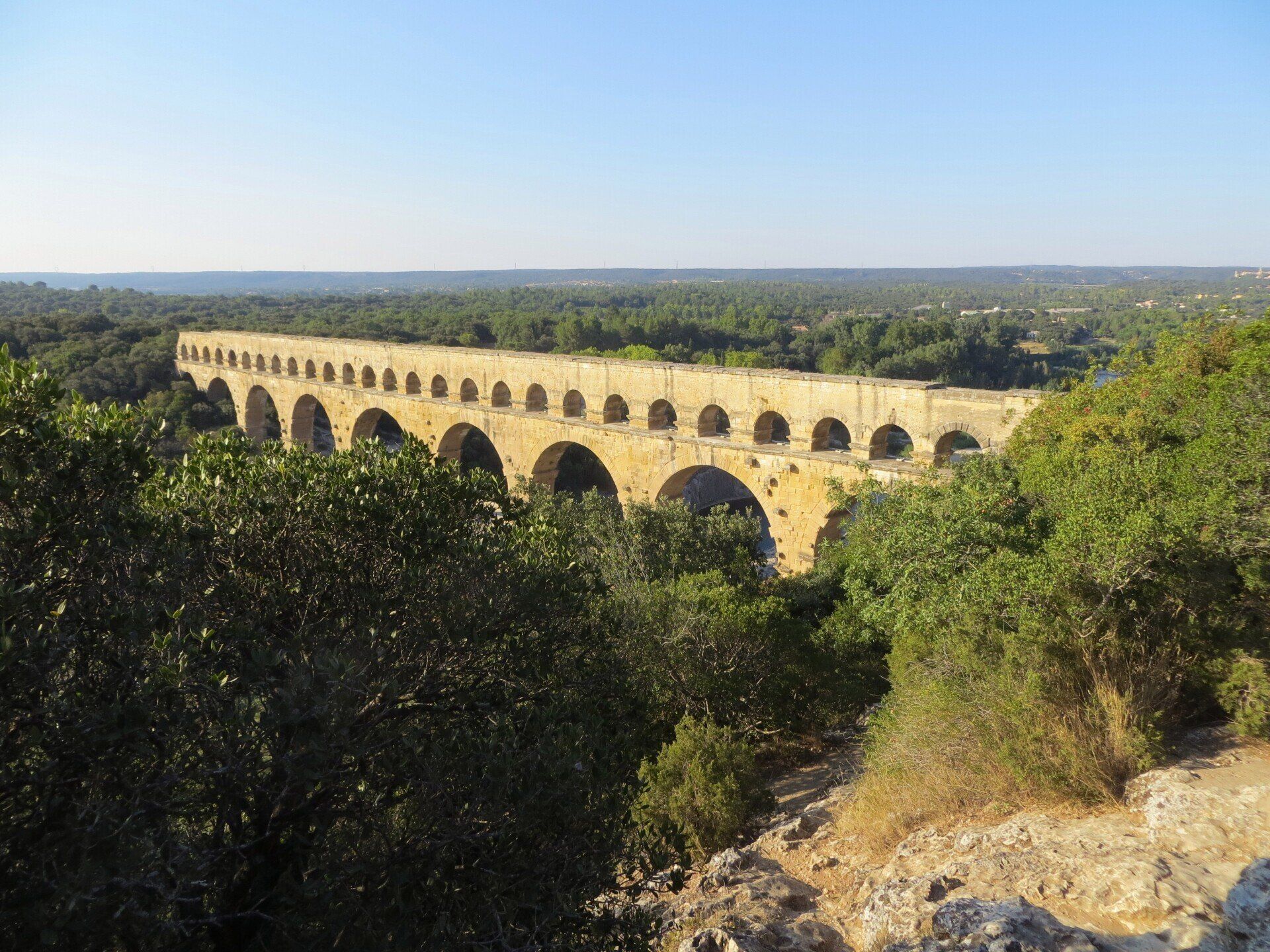Discover the history of our village in the podcast of the showThe olive grovefrom July 2019 onRadio Ecclesia
The village of VERS-PONT-DU-GARD
Between Avignon and Nîmes, Vers-Pont-du-Gard is a small town of less than 2,000 inhabitants, near the famous Pont du Gard. Located mainly on the left bank of the Gardon, it occupies the foothills and the magnificent eastern scrubland of Uzès, which is only ten kilometers west of the village.
Our village has an ancient and very rich history that our archaeologist, Joëlle TARDIEU, retraced for us in the programThe Olive Grovein July 2019 and during a conference ("Tracks for a history of the village of Vers-Pont-du-Gard") in January 2020. A drafting work is in progress and you will soon be able to obtain on our site or during our annual festival, a booklet published by the association Arts Courses and Gardens.
Its territory has been occupied since prehistory and the foothills since the early Iron Age. In the plain registered since Antiquity, the habitat remained scattered until the beginning of our era, then became denser, around extensive agriculture devoted to mixed farming with a focus on wine. Few large farms resisted the crisis of late Antiquity and a point of Christianization seems to have developed around the sites of the "Saint-Pierre chapel/church" and Saint-Privat, perhaps from the 4th to the 6th century, then in the Carolingian era. It was only in the late Middle Ages that the population gathered on the heights; the priory town then formed was surrounded by a rampart.
Numerous springs, born from the runoff of rainwater, feed wash houses and fountains which can still be visited and used.
The famous blond stone, a shell limestone from the Tertiary Era which constitutes the molasse plateau on which the village of Vers-Pont-du-Gard was built, has been extracted since Antiquity. The material used from the middle of the 1st century AD by the Gallo-Romans for the construction of the Pont du Gard, comes from the quarry (Estel sud) located downstream from the bridge. Its aqueduct and the medieval village were built from the quarries opened further north, some of which are still exploited under the name "Pierre de Vers".
A signposted walking trail takes lovers of ancient remains from the Place de la Fontaine, through the scrubland towards these quarries and the Pont du Gard, following the Nîmes aqueduct dug in a trench in the soft limestone of the plateau or raised by spectacular works of art composed of arcades in the hollow sectors.









